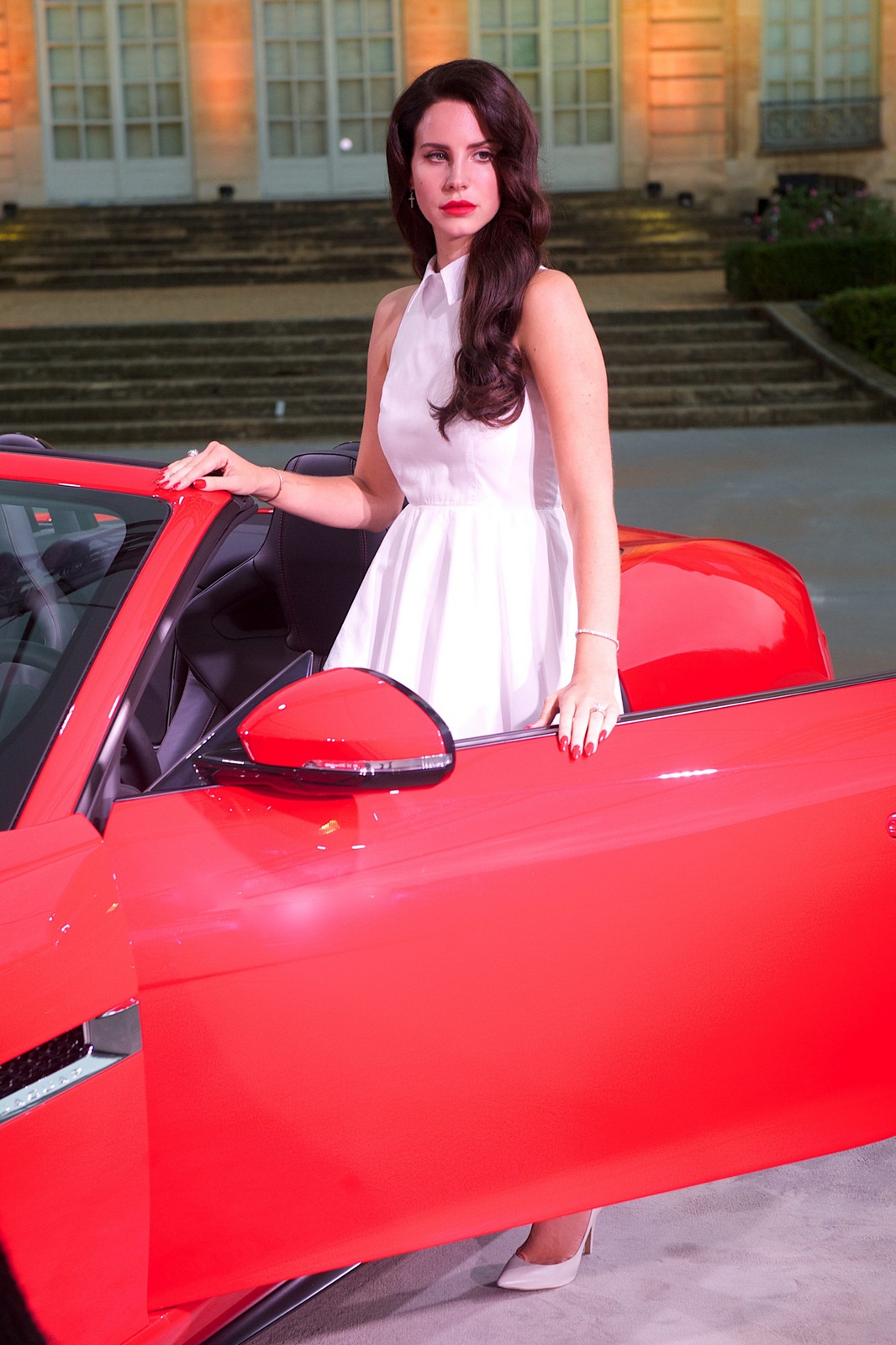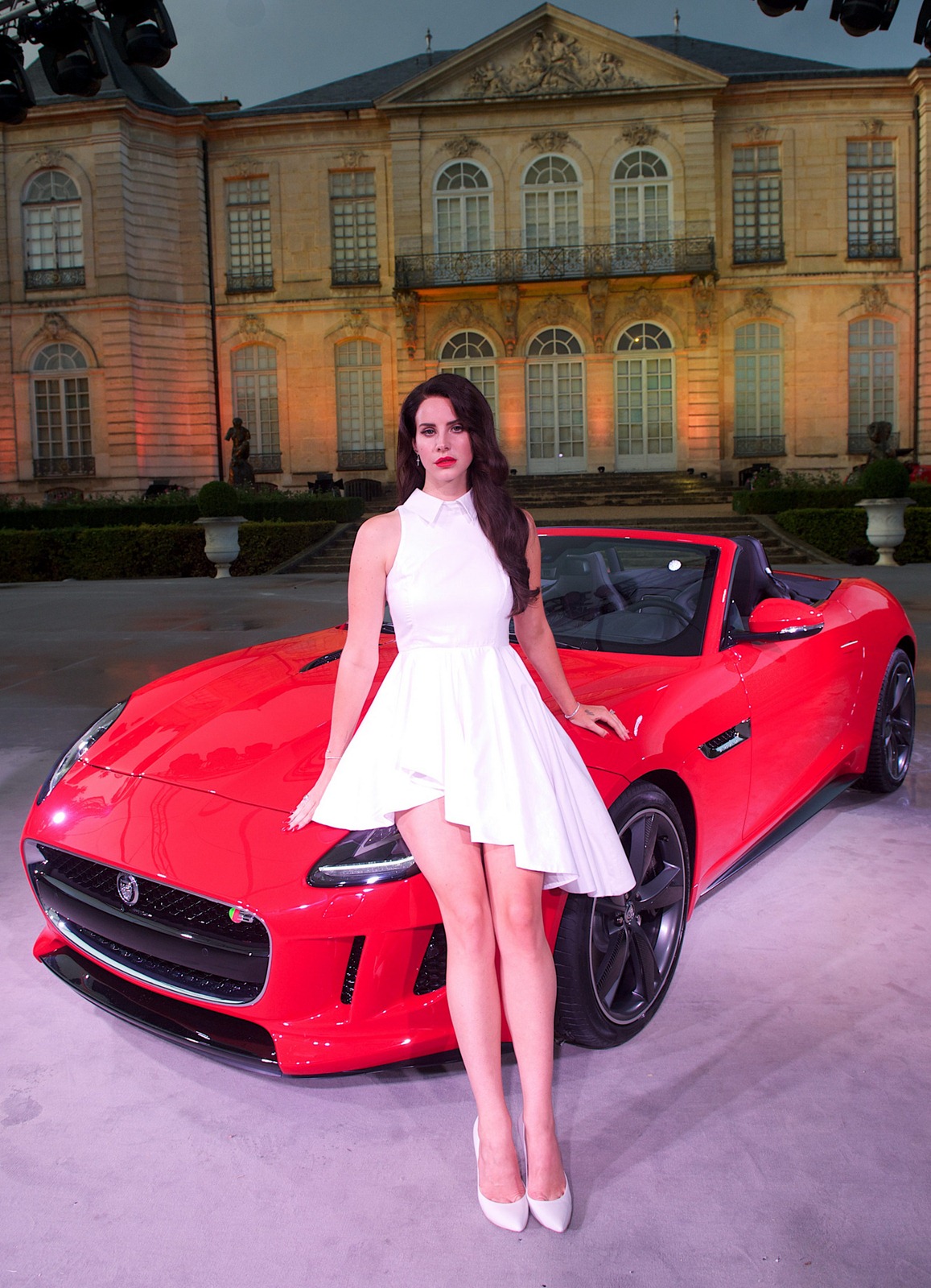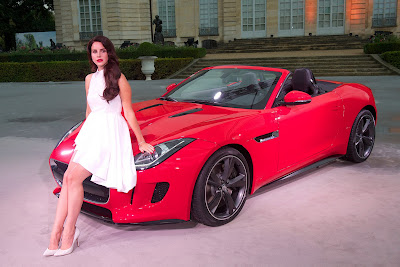|
|
|---|
Sunday, September 30, 2012

Lorsque Renault a annoncé sa « grosse surprise » à venir au Festival of Speed de Goodwood, les spéculations ont rapidement convergé vers la Clio IV RS, la très attendue nouvelle génération de celle qui est à peu près unanimement reconnue comme la meilleure compacte sportive existante. Bingo, c’est bien elle qui a monté la côte de Goodwood aux mains du boss Carlos Tavares.
Nos envoyés spéciaux sur place ont pu l’approcher et la voici se laissant détailler sous le même camouflage vu ici et là sur le web ces dernières semaines. Les roues montées pour le Festival of Speed sont différentes, et la Clio IV RS arbore dorénavant fièrement le losange et les lettres RS sur sa calandre.
Rappelons que les dernières rumeurs font état d’un 1,6l turbo développant au bas mot 200 chevaux, sur la base du moteur qui équipe actuellement le Nissan Juke, et d’une transmission à double embrayage à palettes au volant disponible en option.
Changement le plus important pour cette nouvelle génération : le moteur. La Clio RS délaisse le 2.0 atmosphérique pour un 1.6 Turbo. La puissance ne bouge pas : on a toujours 200 chevaux à notre disposition. Le couple gagne 25 Nm (pour un total de 240 Nm disponible des 1750 tr/min).
Autre nouveauté importante : le bloc est associé à une boîte automatique double embrayage EDC. Et pour la première fois chez Renault, la Clio RS est dotée de palettes au volant.
La nouvelle Clio RS est équipée d’un bouton R.S. Drive. Une pression sur ce bouton modifie la cartographie boîte et moteur, la réponse de l’ESP, le feeling de direction et la sensibilité de la pédale d’accélérateur. Il agit selon 3 modes Normal, Sport ou Race. Avec celui-ci, le passage des vitesses se fait en 150 millisecondes.
Comme pour la Mégane RS, deux châssis sont proposés : Sport ou Cup. Avec ce dernier, l'auto est abaissée de 5 mm et la fermeté est accrue de 15 %. En ce qui concerne le freinage, la Clio RS reçoit à l'avant des disques de 320 mm. La marque n'a pas encore donné les valeurs de performances.
Côté style, la RS n'est pas aussi sage que la 208 GTI mais ne verse pas dans l'outrancier. On remarque ainsi le nouveau bouclier qui intègre l'incontournable lame F1. Les diodes ne sont plus dans la calandre : elles sont ici dans les prises d'air. Le boulier arrière intègre une double sortie d'échappement et un semblant de diffuseur. A la base, l'auto est montée sur des jantes de 17 pouces. En option, on peut avoir du 18 pouces.
A bord, on remarque des éléments de décoration de couleur rouge et des sièges bacquet. L'équipement est fourni : système multimédia, navigation tactile, Radio Bluetooth avec prise USB, carte mains libres et aide à la conduite auxquels s’ajoute un choix d’options comme la climatisation automatique régulée ou le radar de parking.

THIS IS THE fourth-generation Renault Clio which will make its official debut at the Paris Motor Show in September.
Designed entirely by Laurens van den Acker, Renault believes the Clio 4 will be instantly recognisable. With sales dipping, the French manufacturer is also desperate that the new model is more upmarket and more desirable than its predecessor.
How much have Clio sales slumped in the UK? Well, in 2002 Renault sold 86,000 Clios in the UK: last year that figures had plummeted to 21,000.
The newcomer — available only as a five-door —certainly looks the business: it's longer, lower and wider than the outgoing model. It also sits on a new platform with longer wheelbase and wider tracks, plus it comes with a revised electrically-assisted steering system.
It's also the first Renault to get the company's new corporate face, which includes a bigger badge and sleeker, integrated grille and headlights.
You also can't help but notice the bulging rear wheelarches, while in contrast the rear door handles are cleverly hidden in the C-pillars.
See more official photos of the all-new Renault Clio 4
Order books for the Clio 4 open in October, with first deliveries beginning in early 2013, and as you would suspect, pricing will be crucial to the car's success … or failure.
With that in mind, Renault has slashed around £1000 from the rice of the entry-model three-cylinder car which will bring it in at under £10,500. That puts it head-to-head with its main rival, the new Peugeot 208.
The new Clio is the first Renault to use the company's new three-cylinder Energy TCe 90 engine, which develops 90bhp and returns 65.9mpg and 99g/km CO2 emissions. According to Renault, the engine's performance is similar to that of a 1.4-litre naturally aspirated engine.
There's also a 1.5-litre turbodiesel unit, which again delivers around 90bhp, plus an economy-optimised Eco2 version with taller gearing. It's this model which has the headline-grabbing figures of 83g/km and 88.2mpg.
From launch, there will also be a 1.2 turbocharged four-cylinder petrol which will be mated to a new six-speed dual-clutch auto as standard. The diesel gets the same gearbox as an option.
Renault seeks Alpine partners
As is the case with all new superminis, the Clio 4 will come with a huge array of personalisation features. While manufacturers take the view that it "allows buyers to make their car stand out from the crowd", it's also a very profitable route to take for the company.
There are also notable improvements in the cabin, where the look is more upmarket, according to Renault.
The same dash — which will include a 7in colour touch screen as standard in the mid- and higher-spec cars — is used on all trim levels.
Renault and Tom Tom have co-developed the software used on the infotainment system, which has been dubbed ‘R-Link'. The system will be available with a variety of optional extras including internet connectivity and eventually speech-to-text functionality. Base cars will get Bluetooth and standard radio/CD.
Is Jaguar's F-Type, unveiled today, a worthy successor to the famed E-Type of the 1960s -- the most sinewy Jag sports car ever?
We're not sure. We'll have to wait until we can see this one in person. There are hopeful signs. It has an aluminum body, some of the same special looks as the E-Type. The Associated Press points out that just for nostalgia buffs, the F will have old-fashioned rotary knobs for controlling the heating and ventilation.
It will pack plenty under the hood, either a supercharged 3-liter 6 cylinder engine with 340 horsepower for the normal F-type or 380 horsepower for the S. Tops will be the 5-liter V-8 with 495 horsepower. That one will go from 0 to 60 miles per hour in 4.2 seconds.
"What is a sports car? It's a race car that you can drive on the road," Adrian Hallmark, the head of the Jaguar global brand, said Thursday at the car's official launch. "With the F-Type we tried to keep it pure."
The V-6 starts at $69,000 and the V-8 begins at $92,000 when it comes to the U.S.




The Jaguar F-Type will certainly be one of this year’s Paris Auto Show main attractions with the British brand providing all the juicy details during the presentation of the car at the Musée Rodin museum in Paris.
The front-engined, rear-wheel drive convertible was previewed at the 2011 IAA by the C-X16 concept. Despite that concept being a coupe, the F-Type, which is a soft-top convertible, remains remarkably faithful to the concept.
Jaguar claims that its models have “always defined sinuous, muscular simplicity”, adding that the F-Type follows the same principles.
A piece of design should tell a story and this is why every line in the F-Type has a start, a direction and a conclusion”, said the brand’s director of design Ian Callum. “If you approach every line individually and get it as aesthetically correct as possible, get the dimensions right, it will stand the test of time”, he added.
Despite being touted as the spiritual successor to the iconic E-Type, the shape of the F-Type is anything but retro. In fact, even though Jaguar mentions the clamshell bonnet and its “power bulge” in an effort to connect the two models, the F-Type breaks with tradition by having an angular, instead of an oval, grille.
The same holds true for the interior, which is labeled by Jaguar as a “one plus one”. That’s not to say that the passenger’s seat is close to useless, as in 2+2 seaters, but that the cabin is focused around the driver whose space is defined by the swooping handle at the center console and the different, more “technical” materials used on this side of the dashboard.
Both the chassis and the bodywork are constructed of aluminum in order to keep weight as low as possible while increasing rigidity by more than 30 percent in key areas compared to any other Jaguar model. The suspension features aluminum double wishbones all around and the steering has a quick rack for immediate response to the driver’s input.
Jaguar’s new sports car will be available at launch in three versions: the F-Type, the F-Type S and the F-Type V8 S.
The first two are powered by a new supercharged 3.0-liter V6. Output is 340 PS (335 HP) for the base model and 380 PS (375 HP) for the S, with the former covering the 0-60 mph sprint in 5.1 seconds (0-100 km/h: 5.3 seconds) and the latter in 4.8 seconds (0-100 km/h: 4.3 seconds) respectively. The S has a top speed of 275 km/h (171 mph), 15 km/h (10 mph) more than the base V6.
The supercharged V8 is a newly developed unit that pumps out 495 PS (488 HP) and 625 Nm (460.9 lb-ft) of torque. The top-of-the –range F-Type V8S accelerates from a standstill to 60 mph in 4.2 seconds (0-100 km/h: 4.3 seconds) and reaches an electronically governed top speed of 300 km/h (185 mph).
In all versions, power is transferred to the rear wheels via an eight-speed “Quickshift” auto transmission, with the V6 S sporting a Dynamic Launch feature.
The F-Type may retain the “hidden” air vents of the XF and XJ, but it foregoes their rising circular gear selector for a new, more conventional unit that the company compares to a joystick.
In the UK, pricing starts at £58,500 (€73,473, US$94,500) for the V6, £67,500 (€84,777, US$109,100) for the V6 S and £79,950 (€100,391, US$129,200) for the V8 S and the first cars will be delivered to customers from mid-2013.
"To really get a feel for a car's design, I think you need to see it in motion," said Ian Callum, and he should know -- he's the man behind the design of Jaguar's all-new F-Type sports car. And with that, off in the gathering darkness, a car sparked to life, ominous pops and crackles spitting from its dual stainless steel trumpets.
On flip the vertical, J-Blade LED light pipes, and as the car starts to weave down the driveway, a familiar face begins to form: a squished circle flanked by four gills gulping in the chilly night air. Top down, the roadster turns toward the side and a fuselage effect becomes visible, with hidden door handles and "heartlines" further defining the surface. As the car turns back toward the gloom, its aggressive rear haunches and sloping rear deck emerge. The driver mats the pedal and the supercharged six bites and snarls as it roars away. The 2014 Jaguar F-Type has finally come out into the light, and with it, a huge part of the storied British brand's future.
You're forgiven if you're experiencing a bit of deja vu. Other than the obvious differences between coupe and convertible, the F-Type roadster is strikingly similar in form to the C-X16 concept coupe the brand showcased at the 2011 Frankfurt auto show, especially at the front. And yes, the specter of the famed E-Type hovers over it, but its design doesn't hit you over the head with it. As Callum put it, the F-Type evokes the "classic feel of a sports car done in a modern way."
Jaguar finally has its much anticipated – and much leaked – new sports car. Revealed at the Musée Rodin Museumin Paris ahead of the Paris Motor Show, the rakish convertible picks up the long-dormant mantle of the legendary E-Type, but it isn't a retro-retread. Autoblog was invited to England earlier this month for a hush-hush preview of the F-Type, where Jaguar Vehicle Line Director Ian Hoben assured us that "We're not worshipping the ashes of our ancestors here." While Jag has offered the larger XK grand tourer for years, it hasn't really fielded a new sports car in 50 years. And as Hoben points out, "For us not to be there [the segment] seems as wrong as Ferrari or Porsche not building sports cars."
The new all-aluminum F-Type is a strict two-seat affair, none of the leather-wrapped and seatbelt-equipped parcel shelves of the XK here. Available in three trims, F-Type, F-Type S and F-Type V8 S, the baby Jag will offer one of three powertrains, a supercharged 3.0-liter V6 with 340 horsepower and 332 pound-feet of torque, a supercharged 3.0-liter V6 (380 hp / 339 lb-ft.), or a supercharged 5.0-liter V8 (495 hp / 460 lb-ft). The sole transmission at launch will be ZF's ubiquitous eight-speed automatic, with paddles and a more conventional gearshift lever in favor of the rotary selector of recent fame. Jag won't confirm it, but we suspect a manual transmission will be made available in a year's time, possibly on a harder-core R model. In its top specification, Jag promises a 0-60 dash of 4.2 seconds and a limited top speed of 186 mph. The mid-level V6 S does the deed in 4.8 seconds and taps out at 171 mph, while the 'base' F-Type still runs to 60 in 5.1 seconds and hits a 161-mph vMax. While we have yet to drive them, we have heard the new cars fire up and under power, as the Brits say, they sound "right cracking."
Subscribe to:
Comments (Atom)







